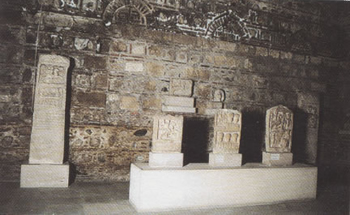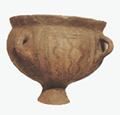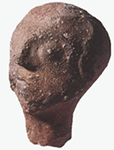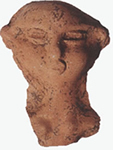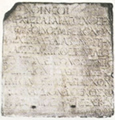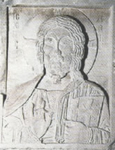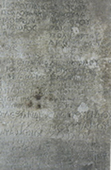ARCHAEOLOGICAL MUSEUM
Oenochoe from the Visaltia area. Hellenistic Period. Since 1970, the Serres Archaeological Museum has been housed in the Bezesten, a closed market dating from the second half of the 15th Century.
This building came to be used in this way as a solution to the pressing problem of firstly gathering together, and secondly, displaying archaeological artefacts that had come to light in the city and the rest of the prefecture. The museum's collection, initially consisted of two small collections. The first, which had until then, been housed in the basement of Serres' First, Highschool for Boys, mostly consisted of sculptures and inscriptions, while the second was donated by Georgios Kaftantzis. In the years that followed, interest in Macedonia and the ensuing development in archaeological research enriched the museum's collection with finds from every period and every part of the prefecture.
Our first information about the region's prehistory comes from scientists who accompanied the allied forces into Macedonia during the course of the First World War. They left records of their field observations and of archaeological excavations they conducted during their time in Macedonia. Later, in the decades of 1970 and 1980, Michalis Fotiadis' archaelogical survay in the Chryso Pentapoli region and the excavations carried out in prehistoric settlements in Dimitra (Middle and Late Neolithic), Pentapoli (Early Bronze Age), and R.S. of Aggista (Late Bronze Age) meant that enough information was gathered to allow conclusions about the domestic and ideological daily life of prehistoric man.
Vase from a Late Bronze Age cemetery in Faia Petra, Sidirokastro. Excavations have been done on a systematic basis at the prehistoric settlement of Promachon Topolnica on the Greco-Bulgarian border since 1993. The research there has brought to light a plethora of finds, which are impressive both in their sheer numbers and in their variety: clay vessels and figurines; stone and bone tools; clay, shell and bone jewellery; and various objects for everyday use (fig. 4,5,6 ) - all representative of the Late Neolithic period in Eastern Macedonia.
Clay vessel. Its written decoration is executed on bird-shaped obtusion.
Only a few of the cities which flourished in the Serres prefecture during historical times are mentioned in written sources. Excavations have furnished us with valuable information on these cities' development, economies, as well as their religious practises and everyday life.
Inscription found in Serres bearing witness to the identification of the ancient city "Sirris" with today's city. Siris, or Sira, has enjoyed an uninterrupted existence from archaic times until the present, and has even retained the same name. The city figures in the museum mostly in the form of finds from the Roman and Byzantine periods, a period during which it enjoyed great prosperity. There are inscriptions from the 1st and 2nd centuries AD (illus. 7,9); glass and clay vessels from a post-Roman tomb; and inscribed funerary relief stele from a workshop which flourished in the area during Roman times. The exceptional marble icons of Christ the Benefactor (fig. 8) and the Virgin, as well as the wall mosaic of Andrew the Apostle (fig. 9) come from the cathedral of Agioi Theodoroi, and are among the museum's most characteristic pieces.
Marlbe icon of Crhrist the Benefactor. 11th-12th centuries.

